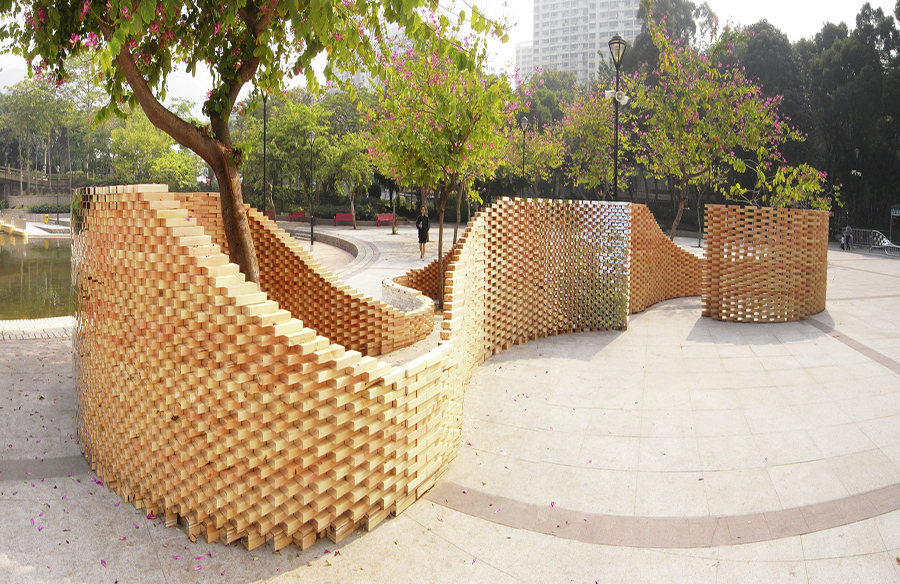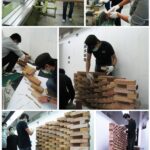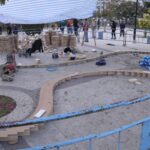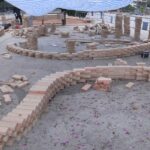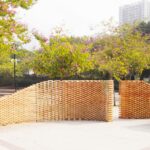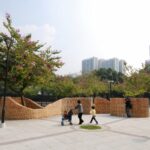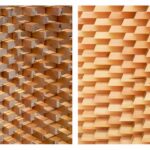Rethinking Public Space
When discussing public spaces, traditional settings such as parks, plazas, and courtyards often come to mind. These areas serve as hubs for social interaction, offering opportunities for people to gather, engage in activities, and foster community connections. However, the potential of these spaces is not always fully realized.
![]()
Intervention at the Plaza
The Pixel Wall project, conceived by the HKU Department of Architecture, aims to transform an underutilized plaza within a park into a vibrant public space. By observing the site and its shortcomings, the team identified an opportunity to redefine the plaza’s identity and functionality. Through the installation of their intervention, the Pixel Wall not only attracts crowds but also imbues the plaza with a cohesive theme, encouraging interaction and engagement among visitors.
![]()
Modular Design Approach
Utilizing a stacking method with standard modules, the intervention creates distinct spaces of varying sizes, facilitating diverse interactions and activities. The use of reflective materials on one side of the modules adds an intriguing dimension to the structure. These materials serve a dual purpose: dividing space as a perforated wall while also creating virtual images that interact with the surrounding plaza environment.
![]()
Fostering Engagement
The Pixel Wall fosters engagement by inviting people to interact with the structure, generating a dynamic interplay between the intervention and its users. This interaction sparks creativity and encourages the emergence of various activities and programs within and around the Pixel Wall. As a result, the once overlooked plaza is transformed into a hub of social exchange and communal vitality.
![]()
Conclusion
The Pixel Wall project exemplifies the innovative potential of architectural interventions in redefining public spaces. By leveraging modular design principles and interactive elements, the HKU Department of Architecture has revitalized a neglected plaza, breathing new life into the urban landscape. As cities continue to evolve, initiatives like the Pixel Wall demonstrate the importance of thoughtful design in creating inclusive and engaging environments for all.


